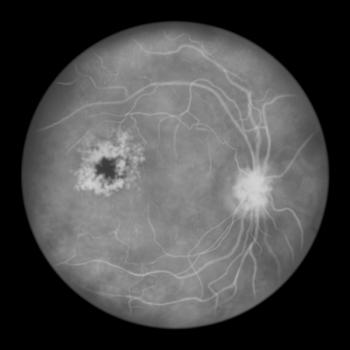
Combination of Olezarsen and Fibrates Yields Enhanced Triglyceride Reduction
Olezarsen effectively lowers triglycerides and enhances cardiovascular health, especially when combined with fibrates, benefiting pharmacists and patients alike.
At the American Heart Association Scientific Sessions 2025 in New Orleans, Nicholas Marston, MD, MPH, explained the mechanistic rationale and clinical implications of olezarsen for patients with severe hypertriglyceridemia, highlighting its targeted inhibition of apolipoprotein C3 (ApoC3). He noted that by reducing ApoC3 protein levels, olezarsen derepresses lipoprotein lipase and enhances hepatic clearance of triglyceride-rich lipoproteins, resulting in substantial triglyceride reductions. Marston emphasized that although LDL cholesterol may rise slightly as large triglyceride-rich particles are broken down into smaller, denser lipoproteins, overall atherogenic burden—measured by non-HDL cholesterol and apolipoprotein B—declines meaningfully. He also reviewed laboratory considerations, including dose-related, moderate elevations in liver transaminases at 80 mg and a small, transient increase in hemoglobin A1C primarily among patients with preexisting diabetes.
Pharmacy Times: As an apoC-III inhibitor, olezarsen represents a new therapeutic pathway. What should pharmacists and clinicians understand about its mechanism of action and any important safety or monitoring parameters that differ from existing triglyceride-lowering therapies?
Nicholas Marston, MD, MPH: Yeah, so apolipoprotein C3 is a protein that works in triglyceride metabolism. It's an inhibitor of lipoprotein lipase, and it also inhibits hepatic clearance or uptake of triglyceride-rich lipoprotein. So with a drug like olezarsen, which targets ApoC3, reducing the amount of ApoC3 protein, as a result you get derepression or activation of lipoprotein lipase.
That's a key enzyme in clearing triglyceride-rich proteins. You also get increased clearance or uptake of those triglyceride-rich lipoproteins into the liver. Both of these act to dramatically lower triglycerides.
One thing worth noting is as we clear these triglyceride-rich particles—these large fluffy particles—and break them down into smaller, more dense particles, we actually create more LDL cholesterol. So the laboratory value for LDL cholesterol will go up a little bit, but the overall atherogenic lipoprotein count—as measured by non-HDL cholesterol and apolipoprotein B—is significantly reduced.
Even though LDL goes up slightly, the overall atherogenic risk and lipid profile is favorable and decreases. One laboratory thing to be aware of: with the higher dose—we tested two doses—with the 80 mg dose, there was an association with an increase in transaminases. We did not see that with the 50 mg dose. Levels were not very high, about five times the upper limit of normal, and no cases of Hy’s law, but a moderate elevation in LFTs with the higher dose is something to be aware of.
Another thing we’ve seen with other ApoC-3 inhibitors is a slight increase in hemoglobin A1C—only about a quarter point. We only see it in those with preexisting diabetes; not in those without diabetes. It levels off after initiation of therapy. It's similar to statins causing a small A1C rise. We’re still trying to understand the mechanism, but none of these findings preclude treatment because the benefit—reducing acute pancreatitis and lowering triglycerides by 65%—outweighs these mild laboratory abnormalities.
Pharmacy Times: How do you foresee olezarsen fitting alongside current triglyceride-lowering treatments such as fibrates or omega-3 fatty acids, and in what types of patients might this therapy offer the greatest added value?
Marston: So we studied patients who were on very good background therapy. Over 70% were on statins, over 60% were on fibrates, and over 30% were on omega-3 fatty acids. So I think of this as olezarsen being used in addition to standard-of-care therapy and working well in that setting.
One thing we noticed when we looked at the subgroups was that olezarsen worked especially well in patients who were on background fibrate therapy. Fibrates also work through lipoprotein lipase, so it seems like the two drugs in combination have a synergistic effect.
It may be that we use these two together more frequently, as combination therapy—just like we do in other conditions. So I think fibrates and ApoC3 inhibitors are going to be something we use more in the future.
Newsletter
Stay informed on drug updates, treatment guidelines, and pharmacy practice trends—subscribe to Pharmacy Times for weekly clinical insights.


























































































































































































































